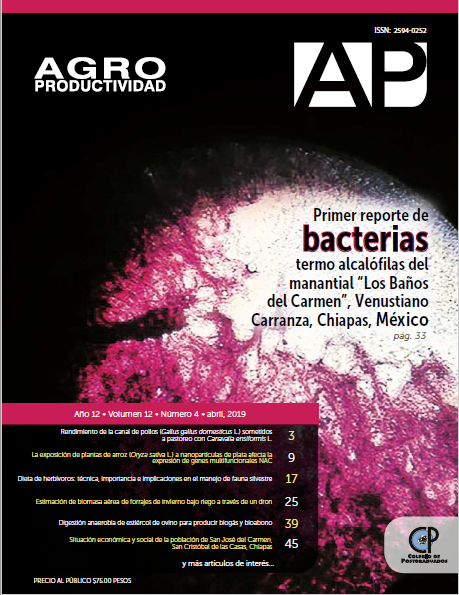Influence of Rhizophagus intraradices in interaction with dose of fertilization in the growth of Brachiaria decumbens Stapf
Main Article Content
Keywords
Endomycorrhiza, chontalpo grass, biomass, Nitrogen and Phosphorus
Abstract
Objective: To evaluate the growth of Brachiaria decumbens Stapf by allocation dry matter in its different yield components and the N and P content in the plant tissue by biofertilizing the seed with Rhizophagus intraradices and applying inorganic fertilization doses.
Design/methodology/approximation: The interaction between R. intraradices and different doses of fertilization on the growth of B. decumbens Stapf was evaluated, in a regosol soil. Six treatments were evaluated in four replicates in randomized blocks design. Four destructive samplings were carried out every 28 d and physiological performance variables were evaluated, in addition to the content of N and P in the plant tissue at the end of the study.
Results: It was found that the initial growth of the B. decumbens Stapf grass assigns more photosynthates for root and leaf blade and this effect is increased with the biofertilization of R. intraradices. In the last two samples, the biofertilized treatments plus the application of the chemical fertilization doses increased their biomass on average 20% more in relation to the control and similar to the highest fertilization dose.
The content of N increases with the biofertilization of R. intraradices in combination with the fertilization doses and the P decreases when the endomycorrhizal fungus is combined with the fertilization doses.
Limitation of the study/implications: The endomycorrhizal fungus must contain at least 40 spores.g of soil and be applied to the sowing.
Findings / conclusions: The allocation of biomass to the different components of the yield increased with the interaction between R. intraradices and the low and intermediate dose of chemical fertilization. The content of N was higher with R. intraradices with and without the application of fertilization doses, but was lower when applying the high dose of chemical fertilizer. The P increased with the biofertilization of R. intraradices and decreased in interaction with the different doses of chemical fertilization.

